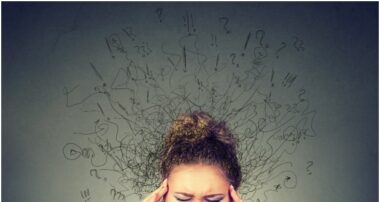Anorexia nervosa, as most Americans know, is a behavioral health disease in which people (often but not always young women) perceive themselves as overweight, even when they have lost weight to the point of it affecting their physical health negatively. People with anorexia might fast for days at a time or force themselves to eat only small portions of low-calorie foods and water. They often exercise obsessively due to their overwhelming fear of putting on weight.
Our clinicians here at Rosewood have noted that there are three essential features of Anorexia Nervosa:
- Restriction of energy intake relative to requirements leading to a significantly low body weight in the context of age, sex, developmental trajectory, and physical health.
- Intense fear of gaining weight or becoming fat, or persistent behavior that interferes with weight gain
- Disturbance in the way in which one’s body weight or shape is experienced, undue influence of body weight or shape on self-evaluation, or denial of the seriousness of the current low body weight.
Because of persistent body dysmorphia (distorted self-image), a person with anorexia nervosa simply cannot see what others see – that they are not taking in enough nourishment to sustain their body functions.Consistent restricting of nutritional intake can cause the body to break down in a variety of ways. The mental health aspects of this can be dangerous as well; anorexia nervosa patients run a much higher risk of suicide.
There is also another form of the disorder known as atypical anorexia nervosa. In the “typical” version of the disorder, the individual becomes medically underweight, presenting the gaunt frame most commonly associated with anorexia nervosa. In the atypical version, the individual restricts food and loses weight, but they do not reach a low enough BMI to receive a diagnosis of anorexia nervosa. There is some controversy in recovery circles about the “lessening” of atypical anorexia nervosa because the individual does not reach a dangerously low body weight. Although clinically low BMI isn’t present, the nutritional deficiencies and rapid weight loss caused by atypical anorexia nervosa can be just as medically dangerous.
Who’s at Risk for Anorexia Nervosa?
Although in recent years the general perception of a “typical” anorexia nervosa patient has been becoming more inclusive, there is still a stereotype of who shows signs of the disorder most often. This is, of course, the stereotype of a thin, Caucasian teenage girl or young adult. As we’ve seen, atypical anorexia nervosa sufferers don’t become gaunt or emaciated. In contradiction to the demographic stereotype, evidence from some studies indicate that all ethnicities share the same genetic predisposition to the disorder.
Anorexia nervosa is also thought to be underreported in men; although girls and women are more likely to develop the disorder, men are typically less willing to seek help for mental health disorders and especially eating disorders. Some programs may be separated by gender, especially in adolescent treatment, but coed programs may help normalize the concept that not only women suffer from eating disorders.
When searching for a residential or day treatment program for anorexia nervosa, be aware that anorexia treatment options offered at a quality center can help adults of all genders, races, and ages understand why their eating disorders began and how to address disordered thoughts and behaviors constructively. That’s the first step to creating a fully recovered life.
Effective Types of Treatment for Anorexia Nervosa
Medical Care
“Must-have” is an understatement when it comes to medical care for anorexia nervosa patients. The physical and medical consequences of long-term nutritional deficiency and weight loss can be extreme. If you’re looking for complete care solutions for anorexia nervosa, it’s important to find a center that can handle medical concerns. Most centers will be able to provide on-site medical care in the form of clinical nursing staff, and if they do not have medical doctors on staff, there should be an established relationship with a local hospital. Normally, eating disorder treatment facilities will spend the early stages of a client’s treatment stabilizing them medically and restoring their nutritional balance.
Nutritional Care
Giving clients a greater appreciation of how nutrition affects our brain chemistry and emotional state is a major part of anorexia nervosa treatment. While the medical and psychiatric aspects of treatment are in progress, nutritionists can begin to develop a meal plan that focuses on weight restoration. Clients are encouraged to partake in meal planning and preparation. These experiences can help clients prepare for life after treatment. Not only can they learn to plan nutritious meals and snacks and get in the practice of preparing meals for themselves, but they can also learn to eat intuitively. That is, instead of looking at food in the context of calories and fat, they can start to appreciate mealtimes for nourishment and pleasure. Recontextualizingfood and eating in a more positive sense is a major part of anorexia nervosa treatment.
Family-based Therapy
A popular and effective type of peer-centered therapy for anorexia nervosa, family-based therapy works well because the participants can share their feelings and emotions with people who have had a shared experience in a safe space. Involving parents, spouses, and other family members in treatment can help them understand the potentially dysfunctional roles they assume in the family that may contribute to eating disorder behaviors. It’s not unusual for the family members to engage in a few sessions on their own, without the patient. This provides an opportunity for the family to adjust their attitudes and behaviors to avoid enabling anorexia nervosa in their loved ones.
A particular type of family-based therapy, useful in teens and young adults, is called the Maudsley Method. This method teaches parents how to assume responsibility for their child’s eating patterns with an eye towards a sustainable diet and eating schedule. Four controlled trials have been conducted so far to investigate the effectiveness of the Maudsley Method. In two of these trials (Le Grange, 1992 and Eisler, 2000), researchers found 70 percent of teens with anorexia returned to their normal weight following completion of a recovery program. In addition, outcomes for younger children with anorexia (between nine and 12 years old) who participate in family-based therapy are similar to success rates enjoyed by teens and their parents.
Individual Therapy
Anorexia nervosa treatment should always include a few options for individual therapy as well. One-on-one therapy sessions between teens with anorexia and their therapists provide a safe, secure environment. During these sessions, therapists can help to identify the root causes of anorexia nervosa and begin evidence-based methods of correcting them. Individual therapy is also necessary to teach patients how to restructure negative thought patterns and recognize distorted beliefs about their appearance.
These sessions usually explore the client’s childhood and upbringing, as well as interpersonal relationships; these are both important in a person’s psychological development and can act as causative factors for anorexia nervosa. Individual sessions also help provide clients with a sense of safety, care, and support. Most people with anorexia nervosa are in a psychologically fragile state when they are admitted to a facility, and it is essential to create a safe space in which to recover.
Cognitive-Behavioral Therapy (CBT)
One of the most time-tested and effective methods of eating disorder treatment, CBTis highly effective at highlighting which thoughts are disordered, and recognizing how they are negatively affecting the patient. CBT offers cognitive tools to help patients understand why they think certain thoughts, immediately recognizing negative self-talk and quickly modifying these thoughts to prevent returning to unsatisfactory eating habits.
People with anorexia are almost always resistant – initially – to admitting there is a problem and changing their eating habits. Cognitive-behavioral therapy gets patients “on board” by having them participate in clear-eyed assessments of their thought patterns with the help of the therapist, who works from a predetermined inquiry list. CBT therapists also include techniques that give patients a new sense of hope about treatment by gently but firmly encouraging patients to take ownership of their recovery program.
Medications for Anorexia Nervosa
Although some anorexia nervosa treatment options involve antidepressants, medication is not usually a major part of treatment. Many eating disorders happen concurrently with other mental health disorders, however, so antidepressants may be useful in the co-occurring treatment of depression. Some medications can act as appetite suppressants, though. If this is the case, these medications are never recommended for someone in anorexia nervosa treatment.
Getting Help Today
As with any kind of mental health treatment, early intervention makes the possible outcomes for anorexia nervosa treatment much better. However, you shouldn’t rush to the first place you find on an online search. Give them a call and discuss the kinds of treatment the facility offers and how they will meet your needs. You’ll be looking for the topics we discussed, of course, but the facility’s location, atmosphere, and culture can also affect your recovery.
No matter which program you choose, don’t lose hope. Recovery is eminently possible. Make some calls and do some research into these “must-have” treatments – you can help stop anorexia nervosa early in yourself or a loved one.












